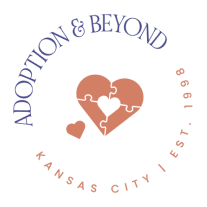One way to gain an understanding of open adoption is to explain what it is not. Open adoption is often confused with other types of relationships. At the top of the list is co-parenting. Most people who equate open adoption with co-parenting believe that co-parenting is not an effective way to raise children and are inclined to reach the same conclusion about open adoption. The misunderstanding is a result of confusion about the boundaries and roles in open adoption. In co-parenting, the parent figures have equal authority, roles, and access. In open adoption, birth parents do not have the same authority, roles, or access as the adoptive parents.
- First, birth parents have no authority over the adopted child. Birth parent involvement is based on good will and cooperation, not authority.
- Second, there is little confusion between the role of adoptive mother and the role of birth mother because the roles are very distinct. While the adoptive mother carries out the role called “Mom,” the birth mother is more akin to an extended family member or a special family friend.
- Third, there is the matter of access. Detractors of open adoption like to depict a birth mother as someone lurking in the attic, monitoring every conversation through the heat ducts, and waiting for the most inopportune time to make a dramatic and disapproving appearance. This is hardly the case.
Some people suggest open adoption is nothing more than “glorified babysitting.” They complain, “You do all the hard work, pay all the bills for 21 years, and then they leave you.” …Um, this sounds like parenting. These people are suggesting that the biological connection is so powerful between the child and the birth parents that it can easily cancel two decades of daily interaction with the adoptive family. That is simply not the case.
An especially frightening misunderstanding is that there is no room for privacy in open adoption that it requires total exposure of those who participate in it. Certainly, open adoption features a spirit of candor and transparency, but the sharing is purposeful and kept within the limits of common courtesy and decency. There is much that both families need to know about each other if they are to enter a relationship intelligently and if they are to serve the adoptee well over time. On the other hand, there is much that does not need to be known. Healthy open adoption relationships feature reasonable and mutually respected boundaries.
The misunderstandings we have considered so far are associated with people wary of open adoption. However, there is another misunderstanding held by proponents of open adoption, though it is less common. It is the idea that open adoption is an almost perfect solution to the problems of an untimely pregnancy and infertility. This is hardly the case. Open adoption does not “solve” or “fix” either circumstance.
It is important that open adoption not be “oversold.” It can work beautifully, but it certainly does not erase the original pain. If people get the idea that open adoption relieves all the pain, they are certain to be disappointed. It is fair to say, that most of the time, open adoption offers substantial benefits to all involved.
*adapted from a handout given at an open adoption conference
Interested in learning more about The Ultimate Guide to Adopting a Child? Check out our entire guide here.
